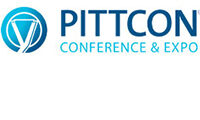Latest Version Of Matrix Gemini LIMS Continues Commitment to Improving Laboratory Management and Quality
Key Improvements in Matrix Gemini LIMS to be demonstrated at PITTCON 2019
18th February 2019
Pittcon 2019 sees the latest version of Matrix Gemini LIMS (Laboratory Information Management System) from Autoscribe Informatics. This release continues the company’s philosophy of supporting organizations in meeting the demands of regulators and industry standards. It also provides the flexibility to meet changing laboratory and business needs and enables innovation and change through the use of powerful configuration tools. Enhancements to the system have been designed to improve laboratory process management and access to, and visualization of data and information.

Improvements to Quality Assurance (QA) worksheet (or run-sheet) functionality provides the flexibility to define and manage the often-complex arrangement of QA and unknown samples that is required. The changes help manage the workload of the laboratory and ensure that the correct Quality Assurance processes are in place. Understanding that instruments are becoming ever more sophisticated changes to the Matrix Application Programming Interface (the open API) means that QA samples that are added by the instruments themselves can be created and managed within Matrix Gemini.
The new MIDAS (Matrix Instrument Data Acquisition System) module provides direct interfacing of analytical instruments to Matrix Gemini. Running in the background, MIDAS monitors the creation of instrument files and will import results directly into Matrix Gemini LIMS when a new file is detected. This includes result files based on worksheets created by the Matrix Gemini worksheet functionality. Direct entry of results data into Matrix Gemini saves time, and eliminates transcription errors, therefore helping to ensure data integrity. The MIDAS module is available for all Matrix Gemini LIMS customers and, like Matrix itself, may be configured either by Autoscribe Informatics or by the users.
Continuing the themes of workload management, data integrity and QA management, the updated Instrument Calibration and Maintenance System (ICMS) allows the creation and management of calibration and maintenance schedules for instruments and their components. A complete history of all calibration and maintenance events is recorded and if instruments are out of maintenance or calibration their use for recording results can be prevented.
The Matrix Tree view functionality allows any hierarchical data in the system to be displayed in a tree like structure, similar to the familiar Microsoft file explorer. For example, batch information can be displayed in this way with an expandable tree view showing the samples, their tests and the test results associated with individual batches of material. When combined with the new Matrix Gemini Container Management functionality the tree view provides an even more powerful way of visualizing and managing data in the system. A typical implementation is the storage and tracking of specimens, such as in a Biobank facility. The storage hierarchy can be displayed through a tree view. For example, rooms, freezers within the rooms and the shelves within the freezers. The container management functionality displays the contents of the individual containers on the shelves such as specimens in trays or held in 96 well plates. Drag and drop functionality allows the contents of containers to be moved and managed and when applied to the tree view drag and drop can allow the relocation of entire containers or indeed the relocation of any level, such as the relocation of an entire freezer to a different room.


